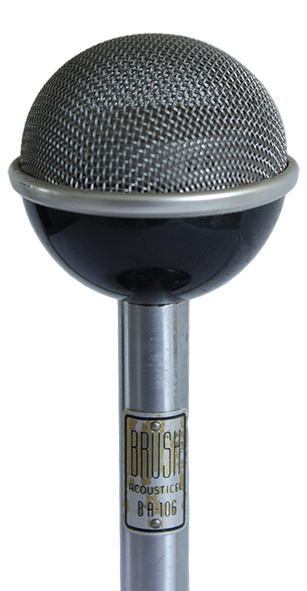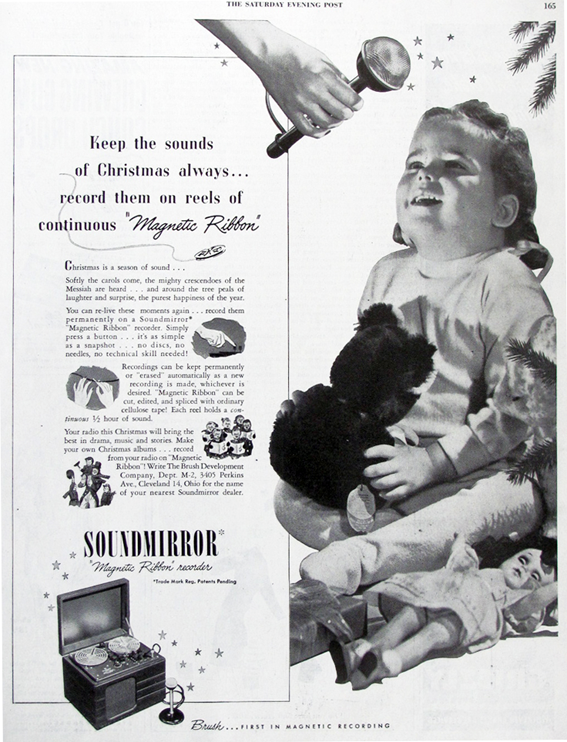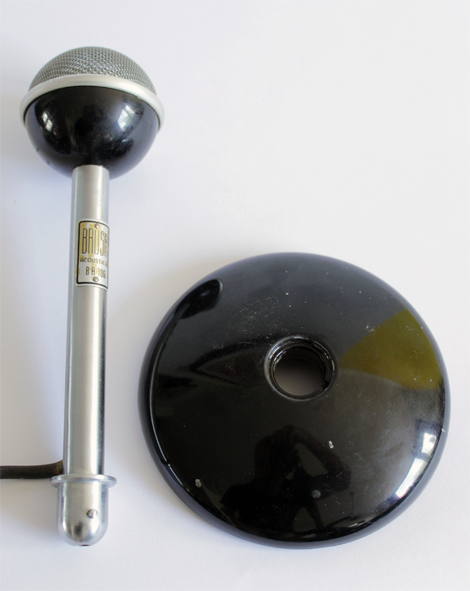|
Ball-shaped microphones were introduced in the United States in the late 1920s; they were condenser type microphones for sound film, called 'The Bomb', for obvious reason. The round shape was thought to be the ideal design, allowing sound waves to reach the element with as little reflections from the casing as possible.
The most successful and well known ball shaped mic was the Western Electric 630 (aka the UK's STC 4021/ French LMT 3630), but the Brush company, inventor of the crystal microphone, also produced a number of ball shapes, of which the BA 106 is probably the one that sold most of all. The size of the BA-106 equals that of the WE 630, with a diameter of just 64mm.
Introduced around 1940, the BA-106 was advertised as 'a high quality microphone, incorporating a hermetically sealed "Acousticel" with sintered bronze damping.' "Metalseal" crystal was used for protection against conditions of high humidity. Brush stated: 'this microphone offers unexcelled response in microphones of this type and price range.' It sold for $ 19.75.
With a flick of the wrist it could be decoupled from its base, to use the BA-106 as a hand microphone.
The clever design of Brush' Acousticel is based on the piezo electrical effect that electric charges are generated on certain faces of some crystals when forces are exerted on them in one direction or another.
The sound cell has no diaphragm, it is composed of two thin crystal plates, which are clamped in an insulating window, together they form an airtight rectangular whole with that window. Under the influence of sound vibrations, the crystal plates are bent inwards, which produces a positive voltage. In case of shock or mechanical vibration, both plates bend in the same direction; in counter phase, thus no voltage is produced and therefore no audible disturbance.
Brush recommended the BA-106 for home recording, public address systems, ham shacks, monitoring and institutional and industrial applications. It also accompanied the Brush 'Soundmirror', the first US made tape recorder, from 1946, which was very successful and sold in large numbers. The BA-106 would remain in production for at least 15 years.
An almost exact copy of the BA-106 was produced by the Dutch Ronette firm, which sold it as type O88, nicknamed 'soundball', the similar O88F (on a flexible gooseneck) and with black plastic (polopas) stem, as the 'Coronation' model, as hommage to the newly crowned Queen Elizabeth II, in 1953.
Many more types feature in my book Witnesses of Words. More information about that can be found at www.witnessesofwords.com
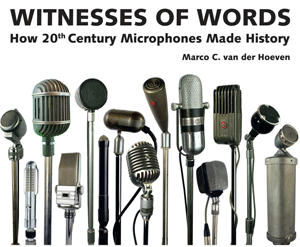
|
> 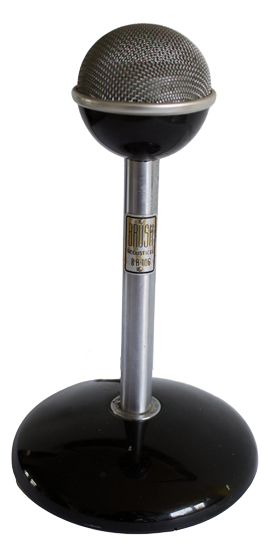 |
|
|
Top: Brush BA-106 Acousticel on its base
Below: sound, 1947 ad for the Soundmirror tape recorder, demounted from base & Ronette copy |
|
|
|
|
|


 Video's
Video's Contact
Contact



